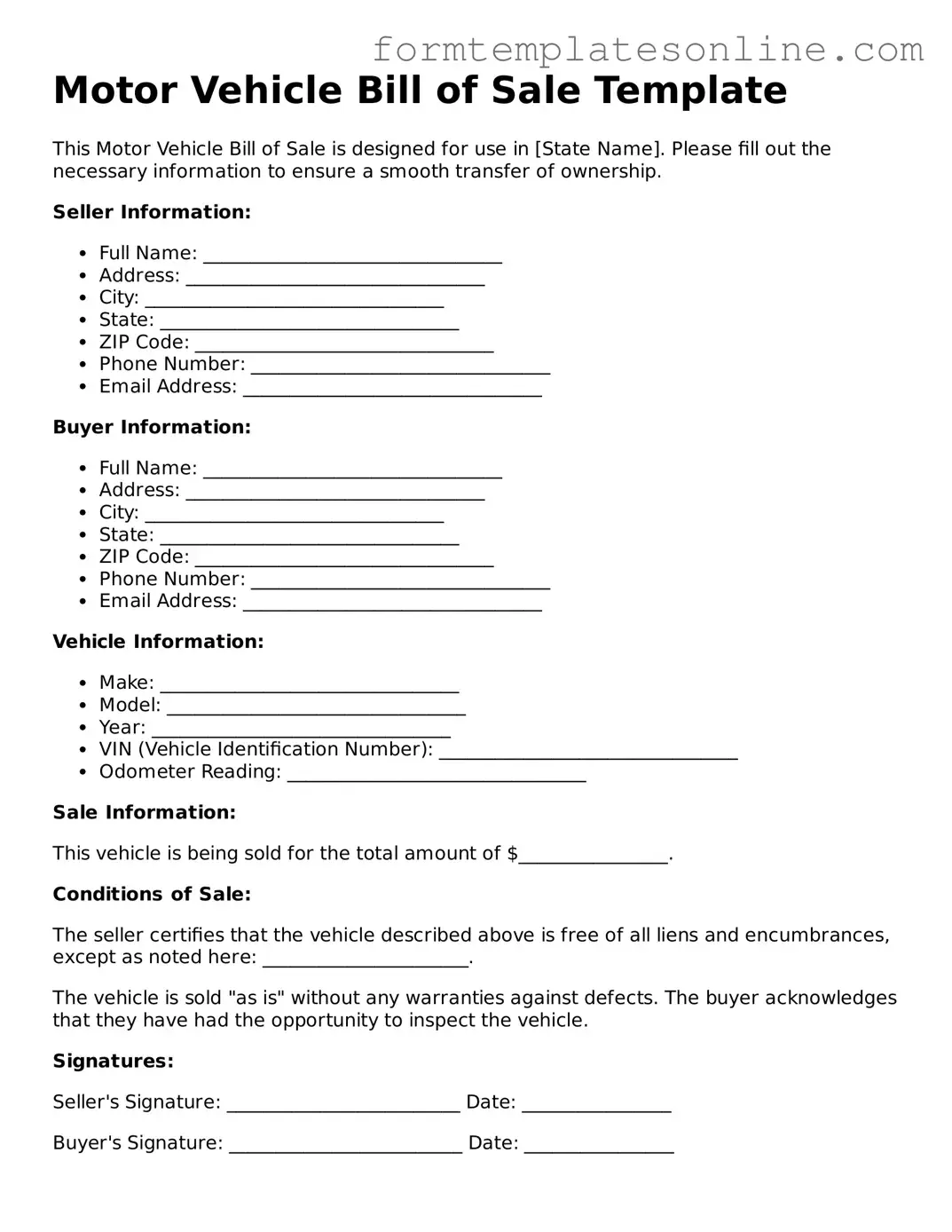What is a Motor Vehicle Bill of Sale form?
A Motor Vehicle Bill of Sale form is a legal document that serves as proof of the sale and purchase of a motor vehicle. It outlines the details of the transaction, including the buyer's and seller's information, vehicle identification details, purchase price, and the date of sale. This document is essential for transferring ownership and can be used for registration purposes with the Department of Motor Vehicles (DMV).
Why is a Bill of Sale important when buying or selling a vehicle?
The Bill of Sale is crucial because it protects both the buyer and the seller. For the buyer, it provides evidence of ownership and can be used to register the vehicle in their name. For the seller, it serves as proof that they have sold the vehicle, which can protect them from future liabilities related to the vehicle, such as accidents or unpaid tickets. Without this document, disputes may arise regarding ownership and terms of sale.
What information should be included in a Motor Vehicle Bill of Sale?
A comprehensive Motor Vehicle Bill of Sale should include the following information: the full names and addresses of both the buyer and seller, the vehicle's make, model, year, and Vehicle Identification Number (VIN), the purchase price, and the date of sale. Additionally, it may be helpful to include the odometer reading at the time of sale and any warranties or conditions associated with the vehicle.
Do I need to have the Bill of Sale notarized?
Notarization is not typically required for a Bill of Sale, but it can add an extra layer of security and authenticity to the document. Some states may have specific requirements regarding notarization, so it's advisable to check local regulations. Notarizing the Bill of Sale can help prevent disputes by confirming that both parties willingly entered into the agreement.
Can I create my own Bill of Sale, or do I need to use a specific form?
You can certainly create your own Bill of Sale as long as it contains all the necessary information. However, using a specific form can simplify the process and ensure that all legal requirements are met. Many state DMV websites provide templates or forms that are compliant with local laws. Utilizing these resources can help you avoid potential pitfalls.
What should I do with the Bill of Sale after the transaction?
After the transaction is complete, both the buyer and seller should keep a copy of the Bill of Sale for their records. The buyer will need it to register the vehicle in their name, while the seller should retain it as proof of the sale. It is wise to store these documents in a safe place, as they may be needed for future reference or in case of disputes.
What if the vehicle has a lien against it?
If the vehicle has a lien, it is essential to address this before completing the sale. A lien indicates that there is an outstanding loan or debt on the vehicle. The seller should provide the buyer with a lien release document from the lender, confirming that the debt has been satisfied. It is advisable for the buyer to verify that the lien has been cleared before finalizing the purchase to avoid complications later.
